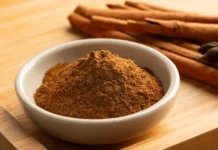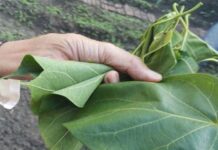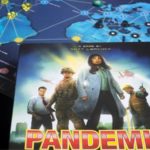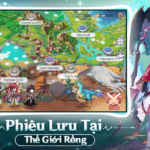The Root board game is gaining attention from many players, and it offers a tense battle of wits. Here is a detailed guide on how to play the Vietnamese version of the Root board game.
1 Introduction to the Root board game
Root is an adventure and war board game where players compete for territory in the forest as living creatures. The game is designed for 2 to 4 players aged 14 and up. Each player takes on the role of a faction and must use tactical strategies to gain control of a large forest area.
The playing time of Root can range from 90-120 minutes, and each player will control the story in different roles, creating interactive and exciting moments.
Further reference: Simple, detailed instructions

2 Read for 5 minutes to know the rules of playing the Root board game
Game pace
Each player’s turn is divided into 3 phases: Morning, Day, and Night. When a player completes all three phases in order, their turn ends, and the player on the left starts their turn. The specific description of each faction’s board will outline these three phases.
Winning condition
Players can win by reaching 30 victory points or by revealing and completing a dominance card with one of the four chosen factions: The Marquise de Cat, the Eyrie Dynasty, the Woodland Alliance, and the Vagabond.
Further reference: Instructions for beginners

Each player’s turn is divided into 3 phases: Morning, Day, and Night
Game setup
The setup for the Root board game varies depending on the number of players. For example, if there are 3 players, the Vagabond faction is removed. If there are only 2 players, both the Vagabond and Woodland Alliance factions are removed. The specific sequence for starting the Root board game is as follows:
- Choose a faction: Each player chooses a faction board and takes the components of that faction according to the instructions on the back.
- Place scoring marker and deal cards: The scoring marker of the chosen faction is placed at position 0 on the scoring track. Then, the 54 cards in the shared deck are shuffled, and 3 cards are dealt to each player. The back of the cards distinguishes between the shared deck and each faction’s cards.
- Place ruins marker and create item supply: 4 ruins markers are placed on empty spaces on the map marked with an “R,” and 12 item markers are placed in corresponding spaces on the map to create the item supply.
Two dice are placed near the map, and each player refers to the faction setup instructions behind their chosen faction board.
Further reference: Instructions for beginners
Map
The forest is divided into 12 connected land regions with white-dotted paths. Players can move between land regions with any number of warriors through the white-dotted paths.
However, to move, players must control the land region they are leaving or moving to by having the highest total number of warriors and structures in that land region. If multiple players have the same number of warriors and structures, no one fully controls that land region.
Land regions
Each land region has 1-3 empty land spaces, and each space can contain a player’s structure.
Cards
During the game, players draw cards from the shared deck to their hand to summon and rely on creatures to help them. Each card corresponds to a specific creature, such as a cat, rabbit, mouse, or bird.
Crafting cards
Most cards have a second use, which is to craft another card to receive an effect by activating the crafting tool at the land region indicated on the card. Players can activate the crafting tool once per turn, and each faction has different crafting tools.
If a card has an instant effect, players must immediately perform that effect and discard the card. If the card has a long-term effect, players tuck the card under the faction board and reveal only the effect part.
Combat
Players can engage in combat with other players to eliminate their pieces. The attacking faction chooses a land region where they have warriors, and the defending faction is the enemy with pieces in that land region.
In combat, players roll 2 dice to determine damage. The attacking faction deals damage corresponding to the higher number of pips rolled, while the defending faction can only deal damage with the lower number of pips rolled. The maximum damage dealt is equal to the number of warriors the player has in that land region.
After rolling the combat dice, both factions remove pieces based on the number of pips rolled. The player receiving damage can choose which pieces to remove.
Additionally, the defending faction can reveal an ambush card with the same creature as the land region before rolling the combat dice to deal 2 damage to the enemy. The attacking faction can also use an ambush card with the same creature to hinder the defending faction.
 You will roll 2 dice and determine by counting the number of pips
You will roll 2 dice and determine by counting the number of pips
3 How to play the Root board game
Marquise de Cat faction
The Marquise de Cat focuses on building structures to earn victory points. They must ensure an abundant wood supply to have enough resources for construction.
Only the Marquise de Cat can place pieces on land regions with their stronghold. If their warriors are removed, they can use a card with the same creature as the land region where the warrior is located to heal and place them back in a land region with a stronghold.
The phases of the Marquise de Cat faction are as follows:
- Morning: Place 1 wood marker at each woodwork.
- Day: Craft cards, perform up to 3 actions (such as fighting, moving, recruiting, or building), and use an overtime action.
- Night: Draw and manage cards.
 The Marquise de Cat will earn points based on building structures
The Marquise de Cat will earn points based on building structures
Eyrie Dynasty faction
The Eyrie Dynasty earns points based on the number of roosts placed on the map. They must carefully manage their decree to avoid falling into turmoil.
The Eyrie Dynasty can dominate a land region even if they have an equal number of warriors as the enemy, but the worth of the crafted items will be reduced.
The phases of the Eyrie Dynasty faction are as follows:
- Morning: Adjust the decree by adding cards to the columns.
- Day: Craft cards, use roosts, and perform decree actions.
- Night: Receive victory points and manage cards.
 The Eyrie Dynasty can dominate a land region even if they are equal in number to the enemy
The Eyrie Dynasty can dominate a land region even if they are equal in number to the enemy
Woodland Alliance faction
The Woodland Alliance represents oppressed creatures in the forest and earns points based on the empathy of the people. They use supporters to start uprisings and have unique combat rules when in a defensive state.
The phases of the Woodland Alliance faction are as follows:
- Morning: Spread empathy.
- Day: Craft cards, use supporters, and perform decree actions.
- Night: Receive victory points and manage cards.
 When in a defensive state, the Woodland Alliance will use higher dice
When in a defensive state, the Woodland Alliance will use higher dice
Vagabond faction
The Vagabond earns points by improving relationships with friendly factions or eliminating pieces of hostile factions. They cannot dominate or prevent others from dominating land regions but possess agility.
The phases of the Vagabond faction are as follows:
- Morning: Prepare items and move.
- Day: Perform various actions such as moving, battling, crafting, repairing, raiding, exploring, and aiding.
- Night: Repair items, draw cards, and manage cards.
 The Vagabond only has one Vagabond piece but can attack enemies
The Vagabond only has one Vagabond piece but can attack enemies
4 Where to play Root board game online?
The Root board game is available for download on mobile phones via CH Play and Apple Store. It can also be played on desktop or laptop computers.
 You can download the Root board game on your phone or computer
You can download the Root board game on your phone or computer
5 Tips and tricks for playing the Root board game
Due to the complexity of Root’s rules, it is important to spend time studying how to play and understanding the cards and action mechanisms in each turn to maximize benefits.
Root is a strategic game that requires creativity in gameplay. Strategic planning and considering opponents’ moves are essential factors for winning.
 Root is a game that requires strategy and creativity in gameplay
Root is a game that requires strategy and creativity in gameplay
Above is a detailed guide on playing the Vietnamese version of the Root board game. Enjoy playing Root with friends and family!
Guide to the Resistance Board Game: Basic and Expansion Version Rules
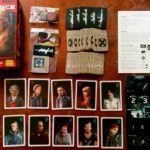 Game: Basic and Expansion Version Rules’>
Game: Basic and Expansion Version Rules’>Come join the competition – it’s time for a gripping game of Resistance! Two teams will face off; one as the Resistance, the other as the Spies. Whoever can complete their secret mission first will take the win – the battle is on!




